How chicken farming lifted a Jakun family out of scavenging in Muadzam Shah
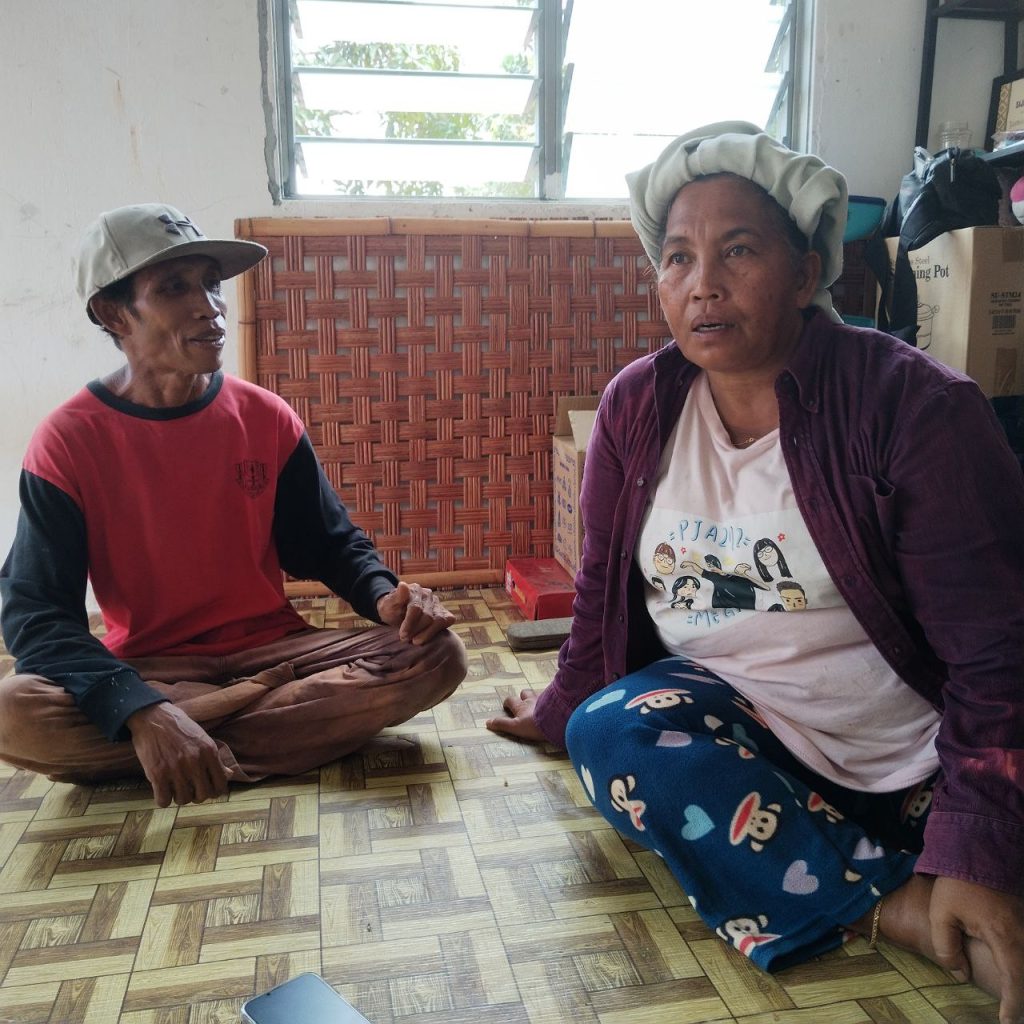
“We’re blessed,” said Amai Yati fondly, a chicken farmer from Kampung Bukit Biru. “Our lives have undergone a remarkable transformation. Thanks to practicing regenerative farming two years ago and now embracing chicken farming, my husband (Mamak Jamida), no longer required to scavenge or carry heavy bertam to support us financially.”
Earlier this month, I joined Global Peace to visit Mamak Jamida and Amai Yati, a married couple in Kampung Bukit Biru, Muadzam Shah, Pahang. As we arrived, the enchanting chorus of “cluck… cluck… cluck…” from the chickens captured our hearts, reminding us of life’s simple joys.
In their rustic wooden coop, fortified by a strong wire mesh above, hundreds of chickens flourished in harmony.
Some roamed freely with a sense of adventure, others pecked eagerly at their food with determination, while a few paused to gaze curiously at us. “We’re setting up a fence tomorrow and it’s going to be amazing,” Amai Yati exclaimed. “Our chickens will finally have their own space to roam freely.”
The chicken (Gallus gallus domesticus) is a substantial, round-bodied bird with short wings, domesticated from the red junglefowl native to Southeast Asia, approximately 8,000 years ago. According to Statista, chicken production is estimated to reach 104.2 million metric tons in 2024.
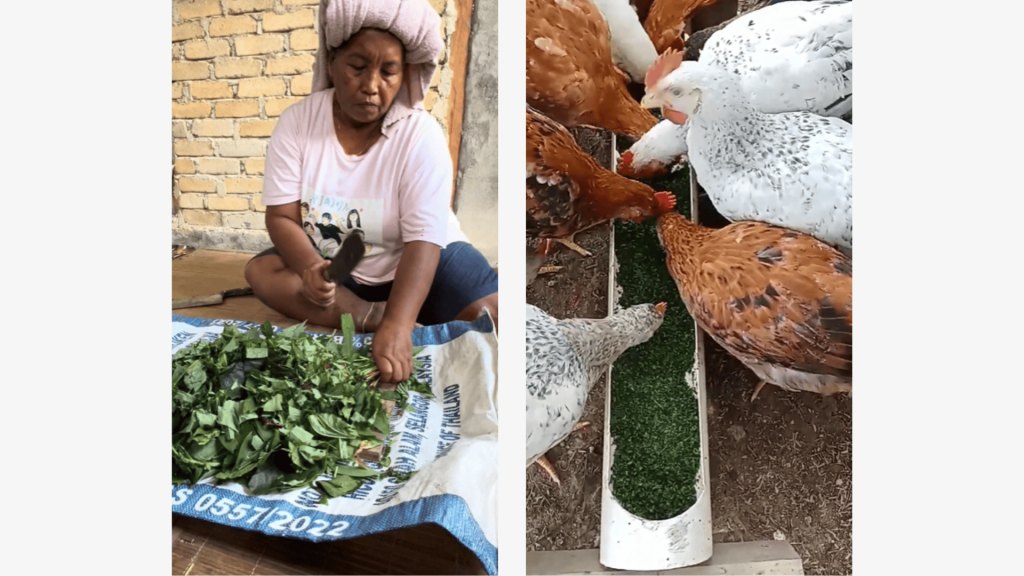
Amai Yati prepares nutrient-rich green feed made from Moringa, Cassava, and Napier leaves, ensuring the chickens receive a healthy and natural diet
The Secret Ingredient to Success
For the third time in a row, Mamak Jamida and Amai Yati have joined our chicken farming initiative. Amai Yati passionately shared, “We are drawn to this project because once we grasp the essentials of raising chickens properly, it becomes an achievable endeavor.”
Their commitment is a shining example that with understanding and dedication, even seemingly challenging tasks can transform into rewarding opportunities.
Born and raised in Indonesia, Amai Yati grew up in a family involved in chicken farming. From an early age, she attentively observed her parents’ techniques. With the courses we provided, she successfully developed new practices on her farm.
Amai Yati said, “I meticulously prepare feed for the chickens. This process is simple: I measure the feed using a scale to ensure precision. If there is any leftover, I add more feed to achieve the desired consistency, which is crucial for maintaining their health. The diet includes a mix of greens like ketum (kratom), sunflower leaves, banana leaves, and moringa, along with carbohydrates and protein.”
She noted that certain farmers engage in the practice of extracting earthworms to feed their chickens while keeping them confined within their coops.
“This approach has been detrimental, reducing the lifespan of the chickens,” Amai Yati emphasized. In contrast, she ensures that her chickens have sufficient space to roam freely, access sunlight, and forage for earthworms naturally.
Furthermore, she highlighted the importance of securing and covering the chicken coop during evenings or inclement weather to protect them from nocturnal predators and maintain warmth.
“Numerous customer feedbacks have indicated that the skin of our chicken exhibits a yellow hue. This is attributed to the fact that free-range chickens typically develop firmer and more defined muscle textures due to their increased exercise from roaming freely, which contributes to a potentially more flavorful and richer taste profile,” Mamak Jamida explained. “In contrast, conventionally raised chickens often display softer and less defined muscle textures as a result of their restricted movement.”
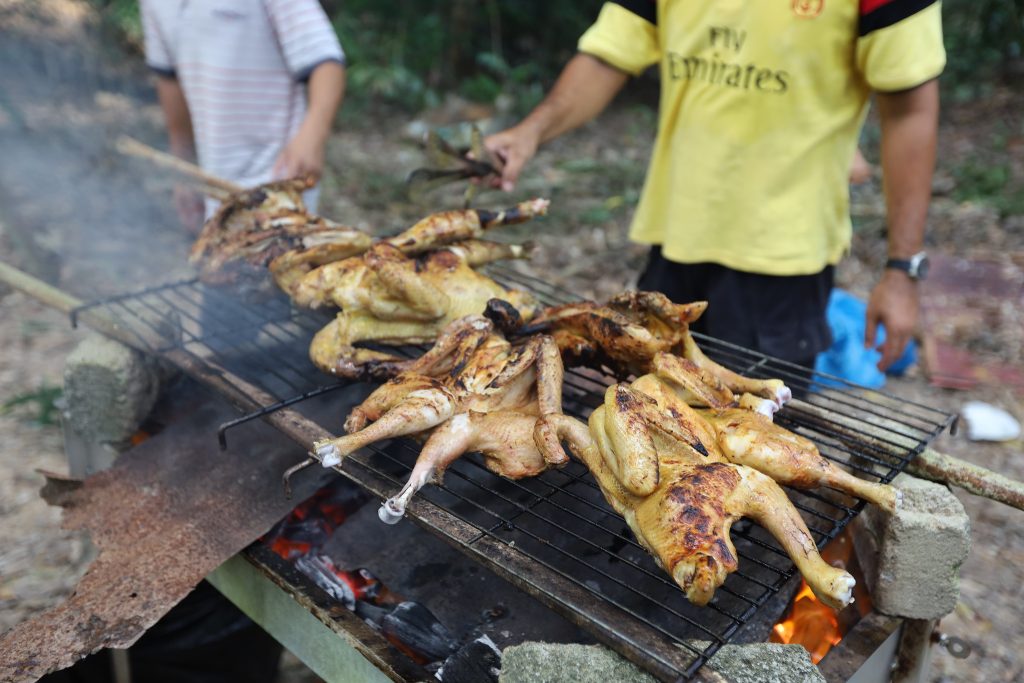
Our free-range chickens develop a natural yellow hue, thanks to their active lifestyle. This not only enhances their texture but also contributes to a richer, more flavorful taste
A Walk to Remember
“Life was tough back then, ” Mamak Jamida stated, reflecting on the past.
Since 2017, Mamak Jamida has worked full-time as a scavenger, collecting plastic bottles and metal scrap under the scorching sun or in the rain for income. He was not alone but alongside other indigenous peers from different kampungs.
“Individuals living far away set up temporary shelters within the landfill to keep their families together,” Mamak Jamida said. “I chose a different approach, commuting to and from the landfill daily.”
In 2020, media coverage led to restricted access to the landfill for indigenous scavengers. The news captured the attention of the Pakatan Harapan government, JAKOA, and notable public figures, including members of the Pahang royal family. Furthermore, it incited significant public pressure to close the landfill.
Some indigenous individuals applied for these passes. Unfortunately, lasting only a month and were ultimately denied when they requested an extension; consequently, they returned to their respective kampungs.
“I didn’t apply for the pass. From 2019 to 2022, I resumed foraging for bertam (Eugeissona tristis) in the forest as a source of income. But the number of these trees was diminishing as a result of ongoing deforestation,” Mamak Jamida continued. “It was only in 2022 that we started our first plot of regenerative farming.”
Last year marked another milestone with the involvement in the chicken farming initiative. “We have established a new pathway toward financial stability,” Mamak Jamida, beaming with pride, added.
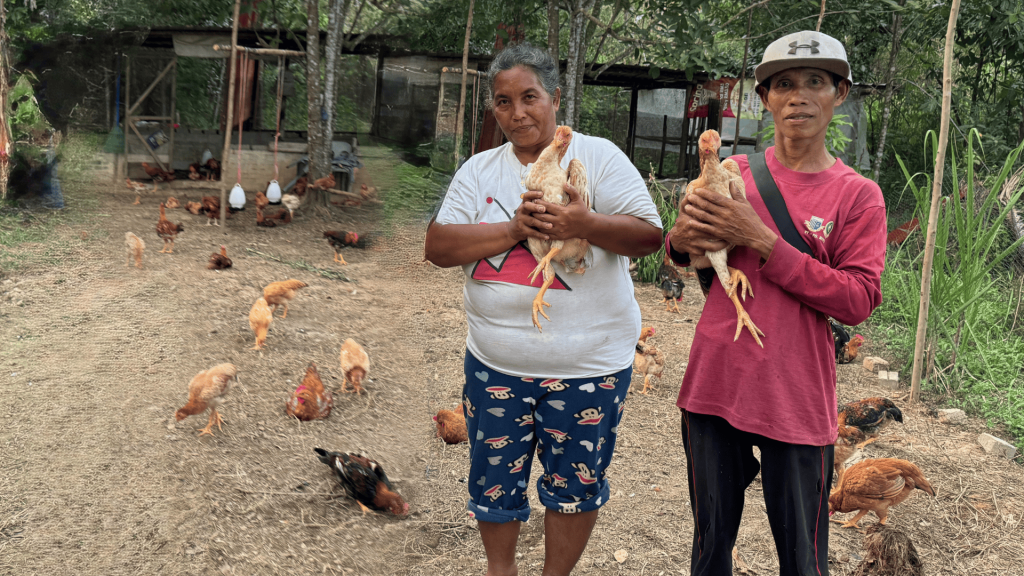
Amai Yati and Mamak Jamida proudly pose with their fully grown Ayam Kampung Kacuk
Turn Setback into Comeback
Despite witnessing their success, Mamak Jamida and Amai Yati have encountered significant setbacks.
“There were times when I thought about giving up, especially after a deeply disheartening experience,” Mamak Jamida shared. “We lost all our chickens to the avian flu. It wasn’t just the financial resources we invested that were gone, but also the emotional dedication we poured into raising them.”
Amai Yati recounted another experience, saying, “I sat on the range, anxiously anticipating the return of the chickens. As one hour extended into two and subsequently five, with no sign of them, my heart sank. Returning to the chicken coop, my mind was overwhelmed with concern and tears streamed down my face. It was heartbreaking to realize that nocturnal predators had taken many of them.”
“Yet, giving up on this journey is simply not an option if we are to sustain our livelihood,” Mamak Jamida expressed. “Though scavenging is now off-limits and landfill access is restricted, as I grow older, foraging becomes increasingly tiring.”
“Still, when I embrace a positive mindset, I see the promise in our dedication to both chicken farming and regenerative agriculture,” he added. “We are wholeheartedly committed to these ventures to support ourselves and pave the way for a brighter future. We’ve discovered that true success in life demands perseverance and resilience.”
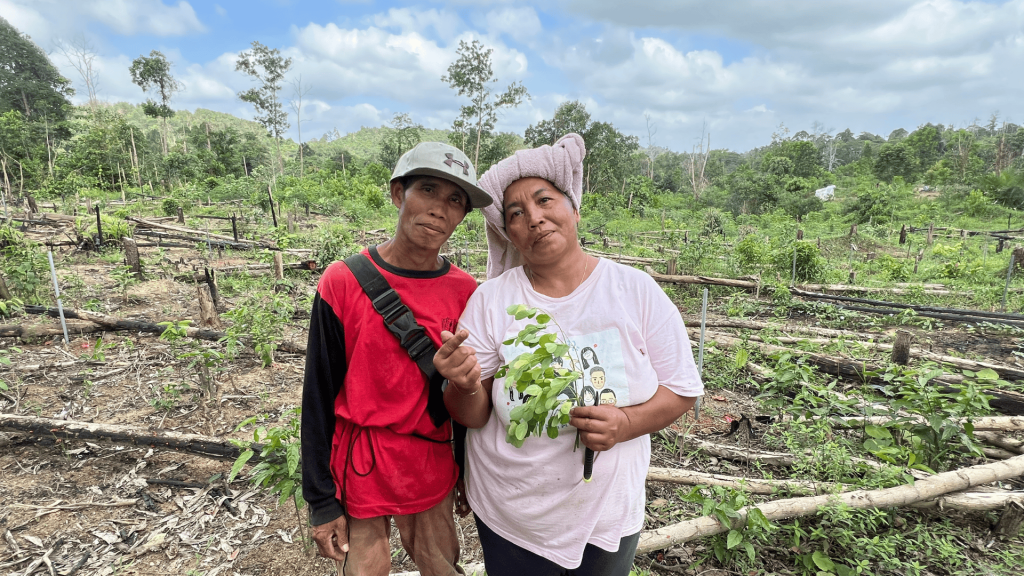
Mamak Jamida and Amai Yati remain steadfast in their journey, embracing the challenges with determination and hope for the future
The narratives of Mamak Jamida and Amai Yati highlight the profound knowledge and wisdom within these communities, offering insights from which we can all benefit.
Their stories represent a segment of the Orang Asli population who traditionally depended on the forests and have been unable to transition to alternative livelihoods. The scavenging activities they engaged in emphasize the unfortunate consequences of extensive deforestation in their surroundings.
As we delve deeper into their stories, the uncertainty of the future becomes more apparent, prompting a keen interest in understanding how other indigenous families navigate their challenges. This bittersweet awareness compels us to consider strategies for supporting them in creating a secure and sustainable future for their communities.
Annjil Chong (Writer)
Editor’s Note:
Special thanks to Annjil for her contributions to this piece!






